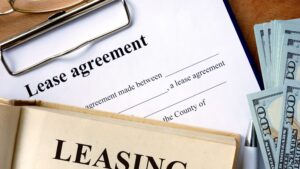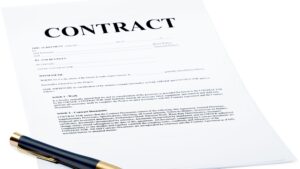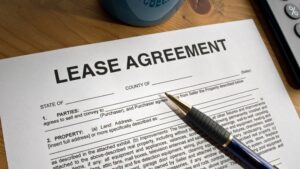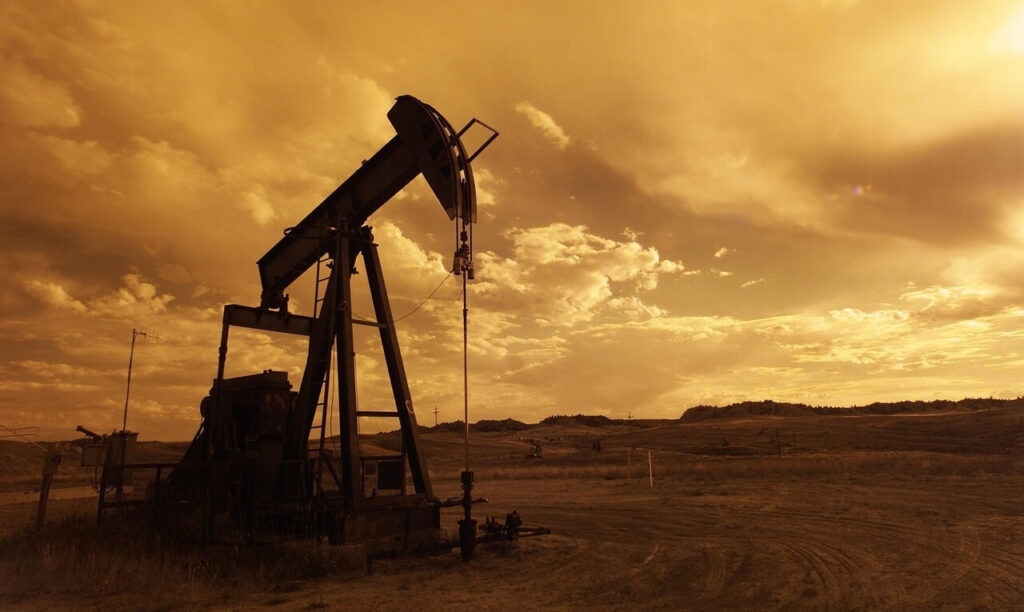Top leases are often executed in areas with fierce competition in the oil and gas industry. As a mineral owner, if you already have oil and gas leases and someone wants to top lease it, you should consider that a vote of confidence.
In this article, we’ll explain top leasing in the oil and gas business and the problematic parts of a top lease.
What is Top Leasing for Oil and Gas?

Top leasing oil or gas is where a person leases a property under a valid lease license. This practice began gaining widespread use by mineral owners during the last decade.
It is regarded as a present grant to the future and a partial elimination of reverter possibility. In short, the already-running oil and gas lease will remain active while the top lease is signed with the mineral owners.
There are two types of top lease
A. The two-party top leasing situation where the lessee secures another oil and gas lease from the lessor on the same property they are leasing. The new lease commences after the first oil and gas lease expires.
B. The three-party situation where the mineral estate owner leases the property to someone, and before the existing lease expires, say within a few months, a third party secures an alternative lease which begins after the first lessee’s lease term expires.
What Is The Difference Between Base Lease and Top Lease?
The difference between a base and a top lease is that the base or bottom lease is the first lease provision on that property. It is the existing lease covering a property’s oil or gas reserves. In contrast, a top lease is a subsequent lease on the same assets after the base lease expires. In short, the base lease is first, and a top lease comes after existing leases end.
The base lease commences on the day the lease is signed, whereas a top lease requires rental payments paid in advance of the commencement date. With these definitions, you should understand both leases and what differentiates them.
Why Oil And Gas Companies Want To Top Lease?
After weighing both options, many oil/gas companies prefer using a top lease because it offers greater flexibility. They can secure drilling rights to a property at any given time by paying for it in advance.
So, an oil company, for example, can control its future stake in the asset leased and plan how to optimize it, unlike a base lease in which the lease term starts the day the lease is completed.
If you want to secure the drilling rights to a property, consider top leasing, as it gives you more time to work toward optimal production targets.
What Are The Problematic Aspects Of Top Leasing?
In this section, we’ll examine the problems associated with a top leasing company but through the lens of various types of top leases.
Two-Party
This type of top leasing might not be of great concern to the landowner. However, some actions the lessee might take could lead to litigation. Some of these actions include:
Ending Overriding Royalty Obligation
A question that may arise in the two-party situation is whether overriding royalties created during the base or bottom lease term will survive in the new lease. This issue is on a case-by-case basis, and the outcome depends on how any overriding royalty provision was created in the previous lease.
Any overriding royalty might affect the lessee’s top lease if they obtain their bottom lease by assignment, and the assignor reserves the overriding royalty as the sole consideration. The lessee can, however, take the top lease without any effect from previous overriding royalty in cases where another consideration is pending pertaining to provision of the base lease.
Ending Gas Purchase Contract
In this case, two parties may have signed an oil or gas purchase contract based on a two-party lease. However, the landowner executed the lease with the lessee of the base lease, which already has an oil or gas purchase contract with another company.
Issues arising here come from the lessee not keeping their side of the contract to supply oil or gas based on the oil or gas lease purchase contract. Non-compliance can be a problem, as the other party can sue for failing to honor the first agreement, even if a top lease has been executed.
Three-Party
The most common dispute arising from a three-party lease is over whose lease is valid. As a result, the question of whether the bottom lessee has extended their lease into its second term depends on whether they have produced, pooled, paid shut-in royalties, or some other means.
The risk associated with top leasing in a three-party situation is when the bottom lease is extended. Lessees gamble that if their base lease does not expire after the primary term, they may lose the bonus they pay to the mineral owner.
Top lessees can avoid litigation by confirming conclusively that the bottom lease has expired before taking possession of the leased premises. Although the top lessee believes the bottom lease expired before their entry, it can be challenging to make this factual determination, resulting in a legal issue.
Should You Sign A Top Lease?
Before signing a top lease, take all steps to ensure the investment is worth the risk before agreeing to terms and committing money to the project.
Before you sign a top lease, review the existing lease on the property and find the following information:
- The time remaining on the lease?
- The amount of lease bonus and royalty percentage stated? A top lease bonus is usually more than the original.
- Is there any possibility that the original lessee will continue drilling?
- Who is offering the top lease? What is their reputation?
- Are the first and second terms of the lease term different?
These are just a few things to consider before acquiring a top lease. A thorough review of the base lease is essential to ensure that top leasing maximizes your benefit financially and that other circumstances are kept in check.
Conclusion
Getting a top lease on a property is not easy, and you should be aware of the many variables involved. When you want to top-lease a property, always check if the property has an existing lease (base lease).
Review the base lease terms to know what you’re getting involved in when your top lease commences. Carefully reviewing the lease terms will avoid any litigation issues that may arise with the operators of the base lease in terms of remitting pay for mineral rights or resources.
FAQs
What is the first right of refusal provision in top leasing?
The right of first refusal provision in top leasing gives the lessee the right to have the first refusal on the top lease of a property after the base lease expires. You can reserve the ‘right of first refusal’ ahead of time when paying for a base lease provision.







